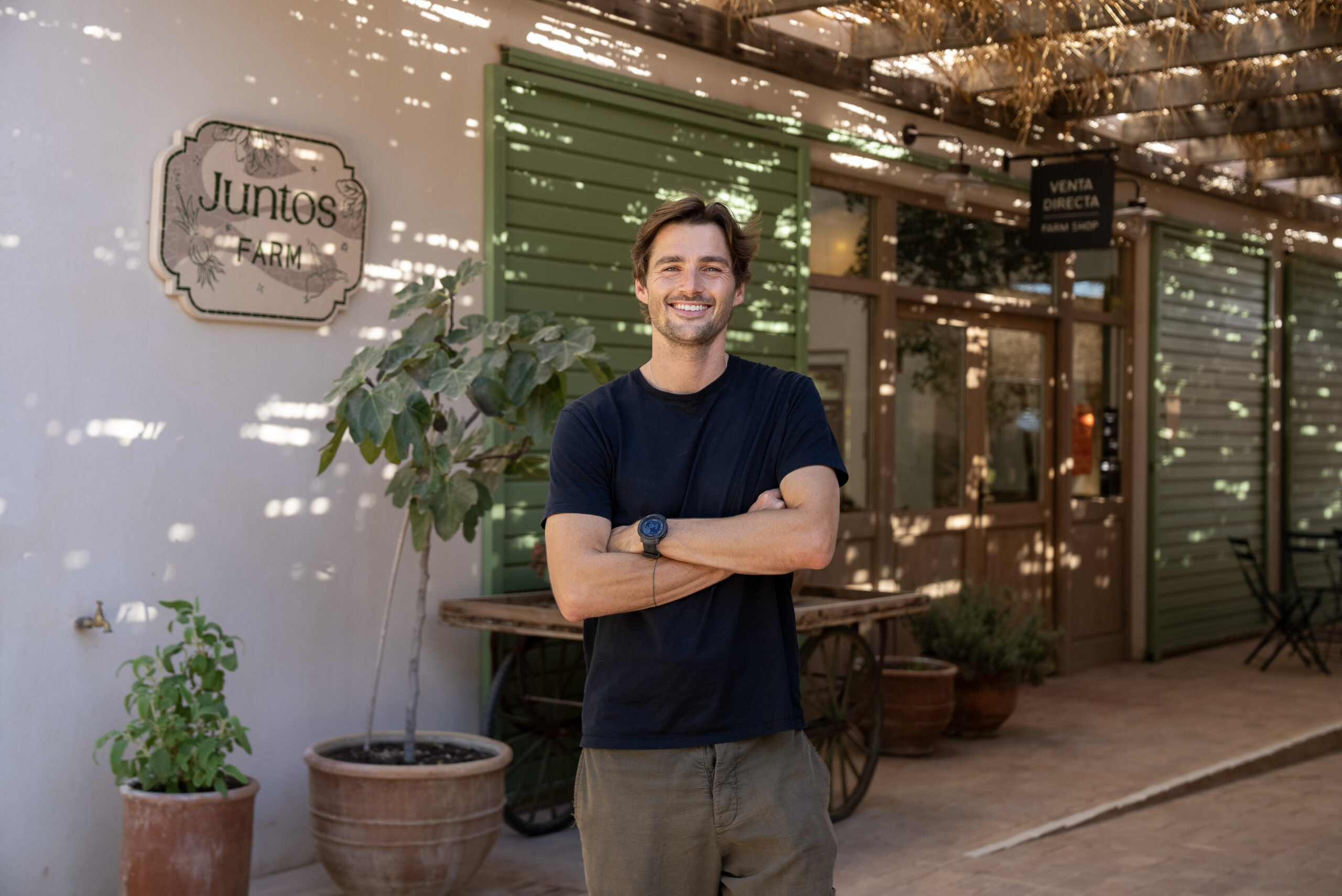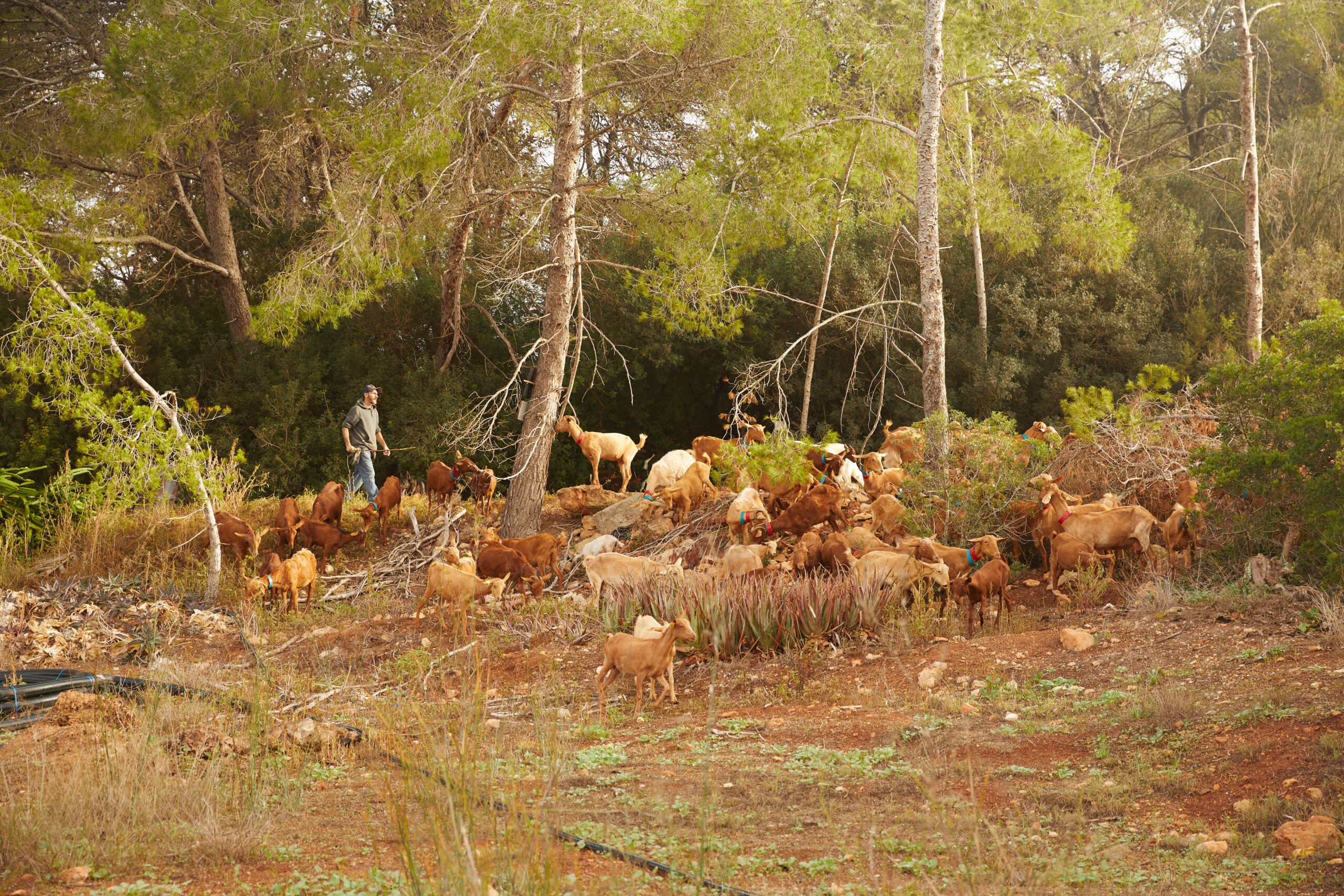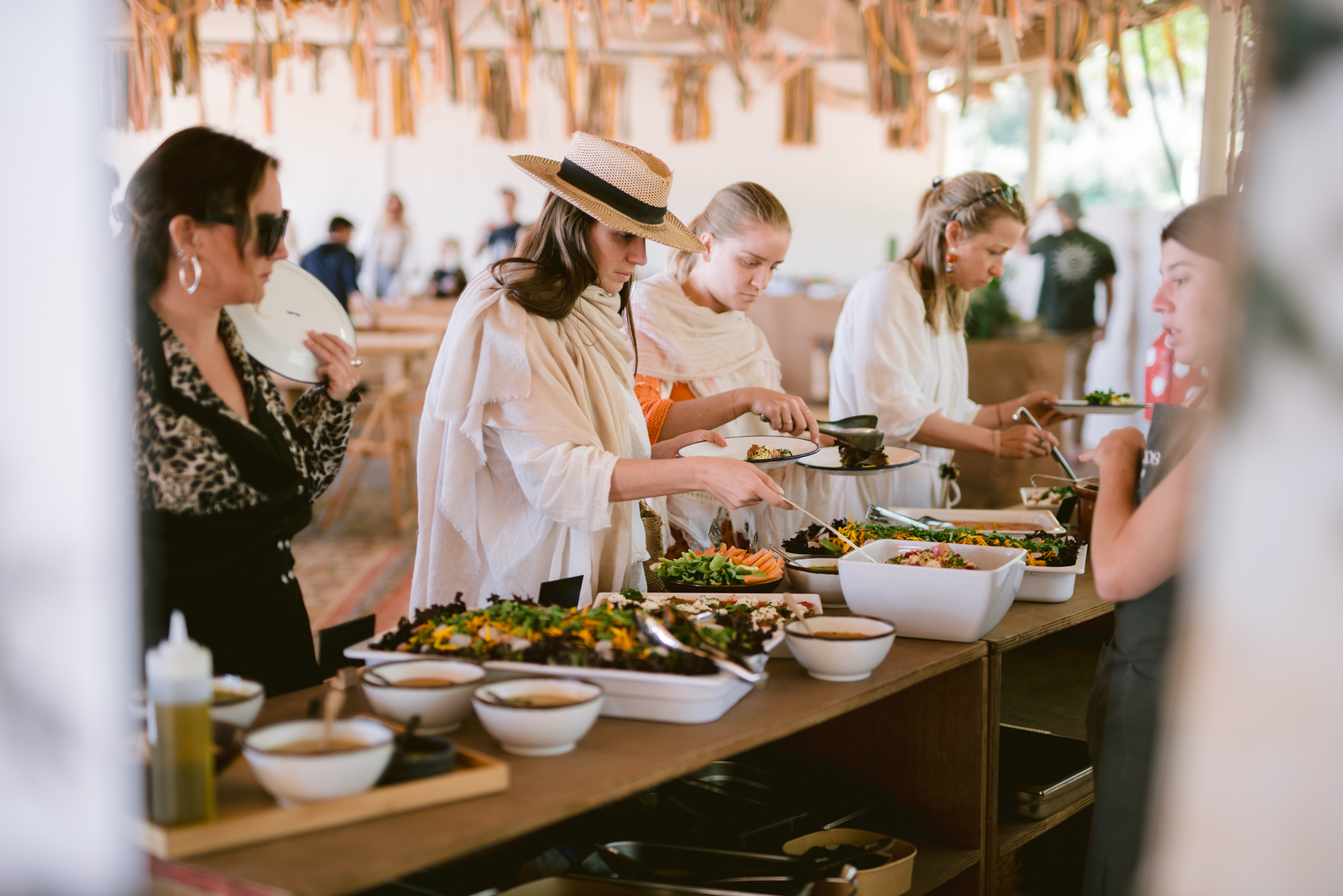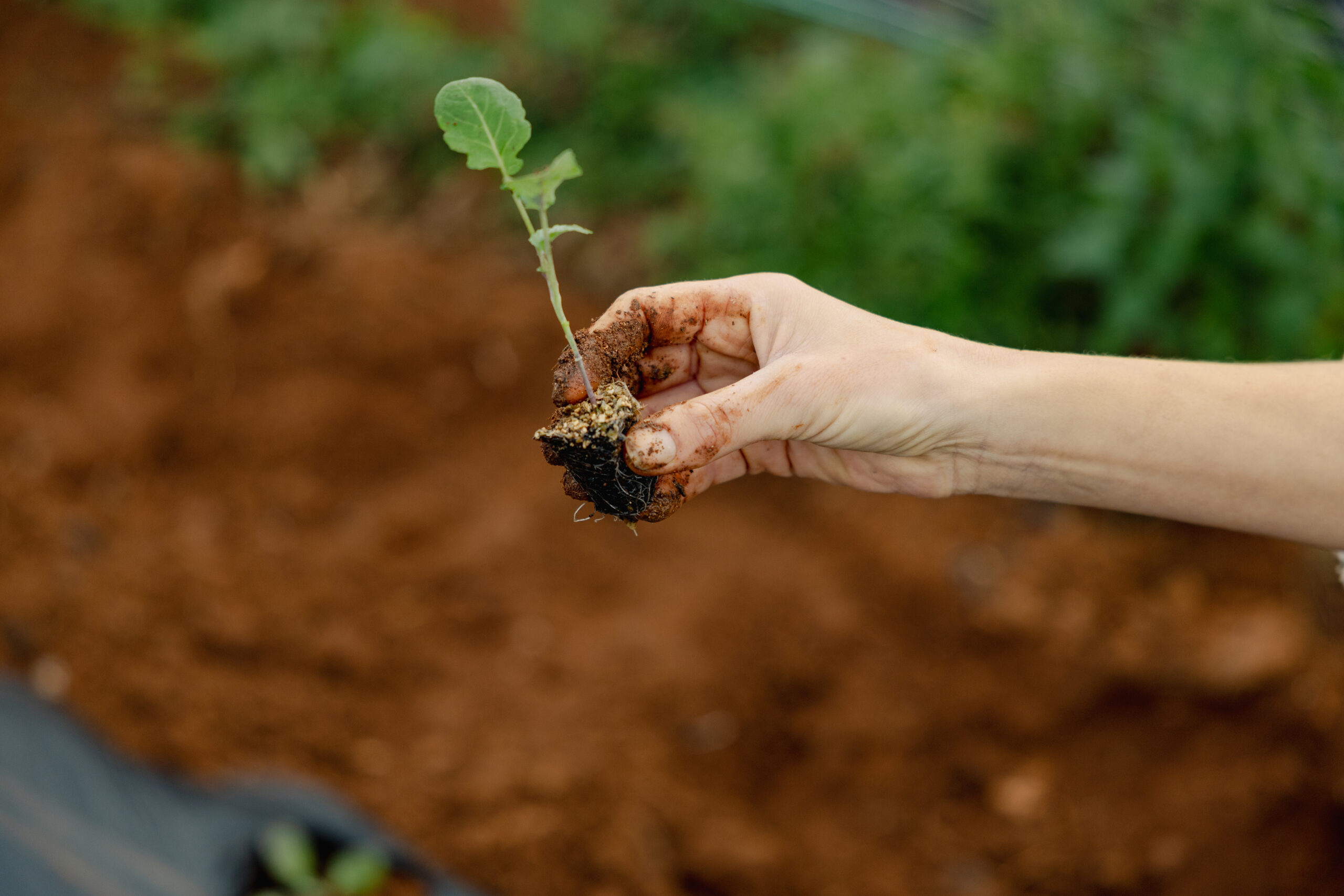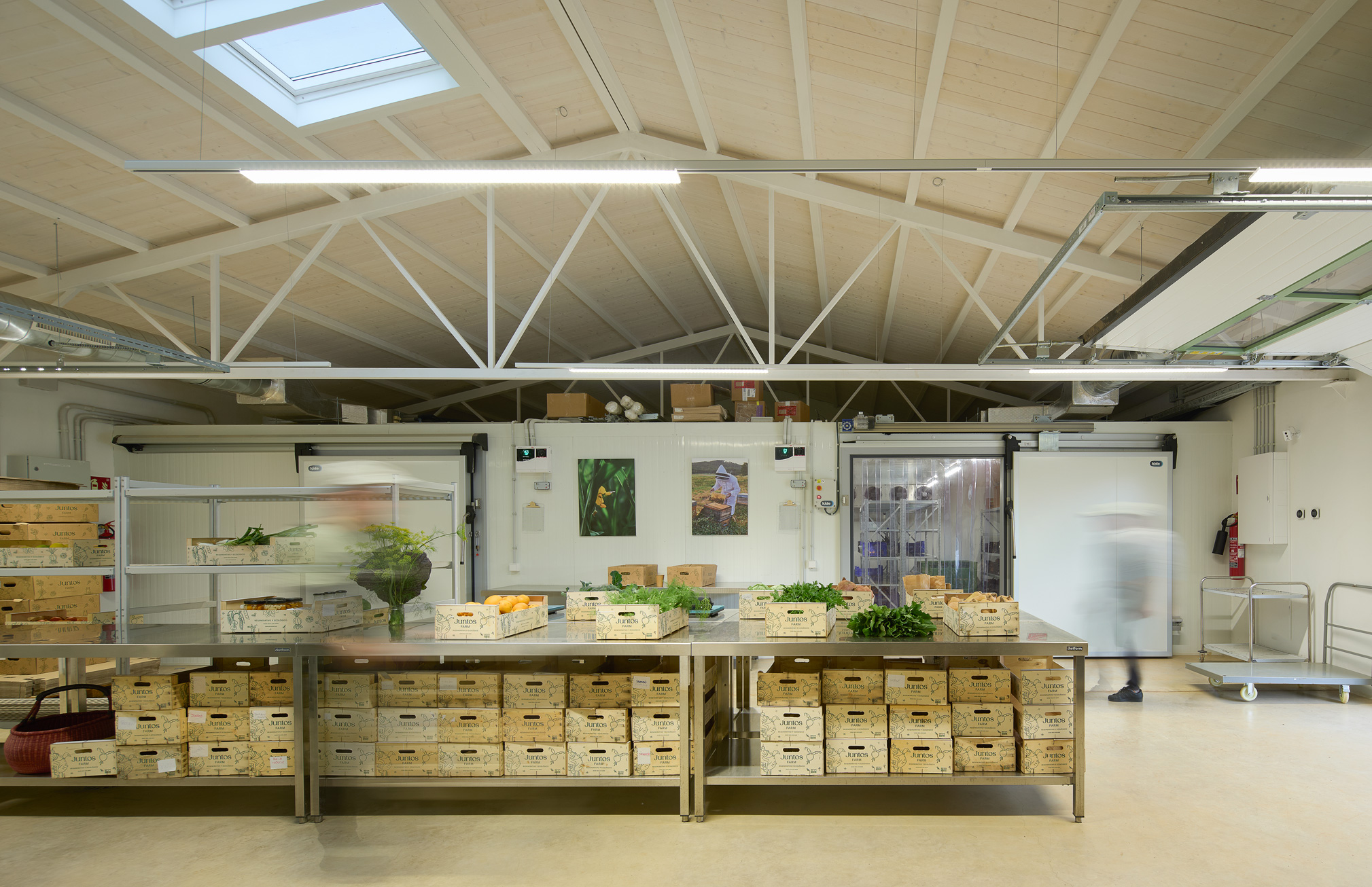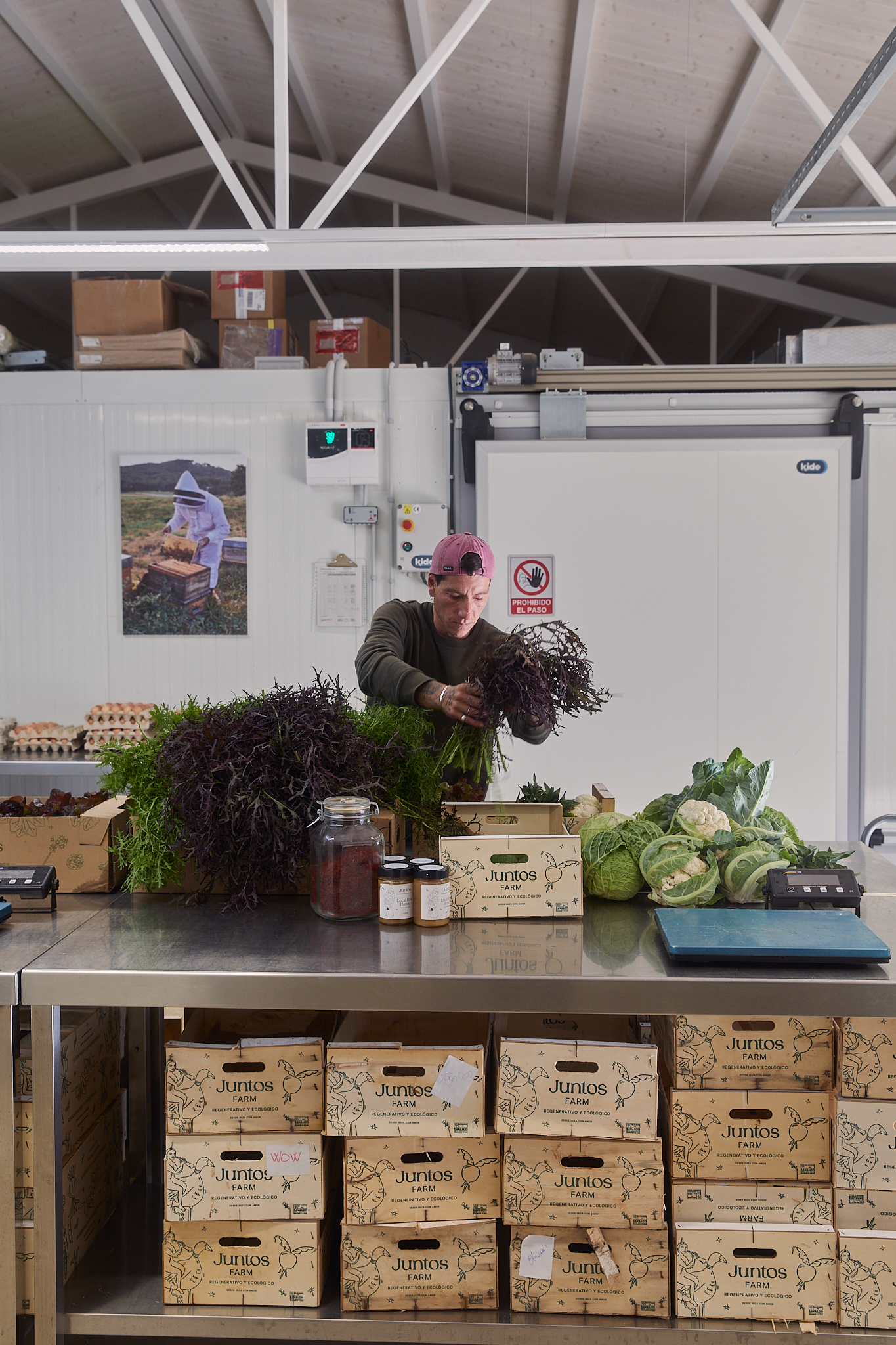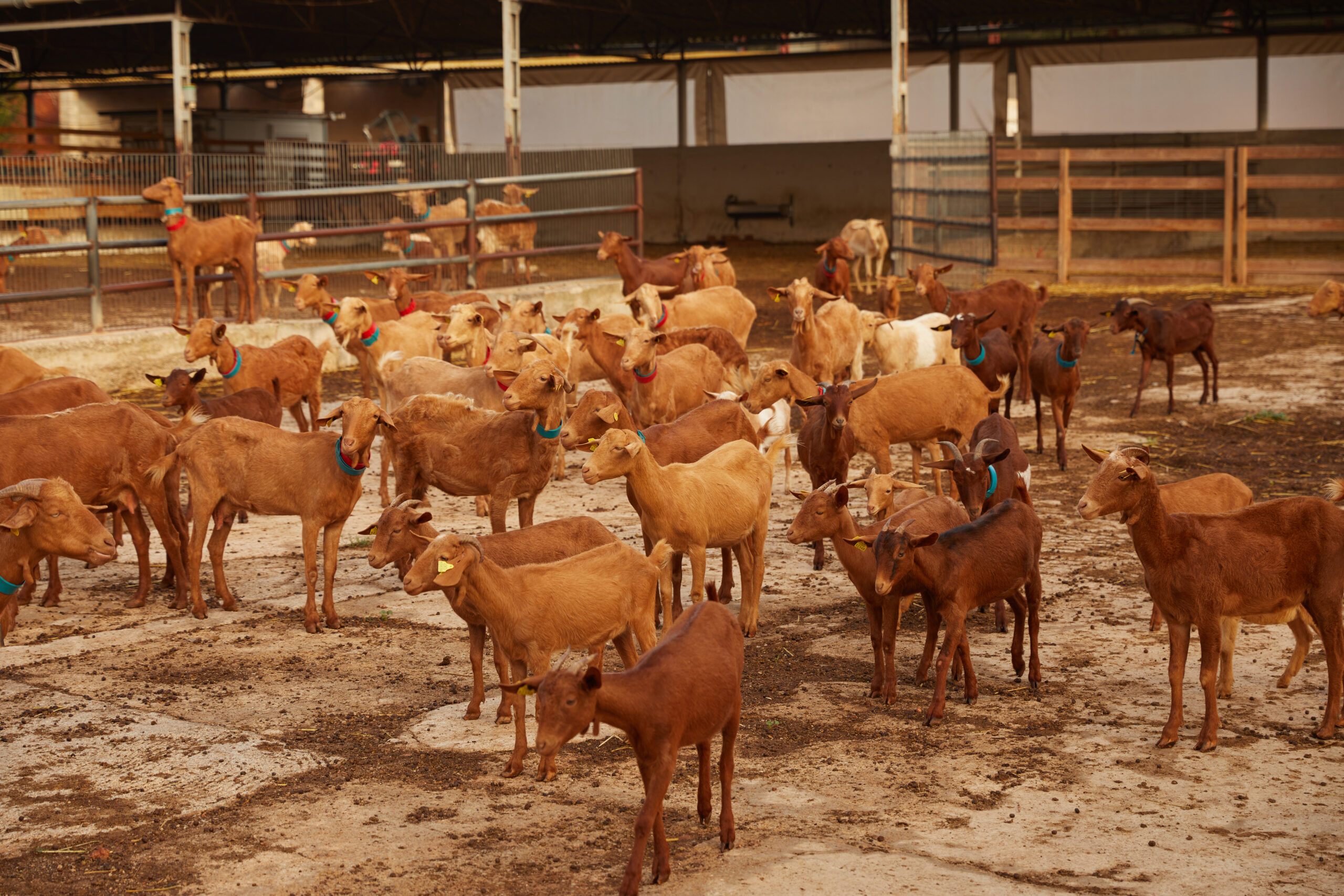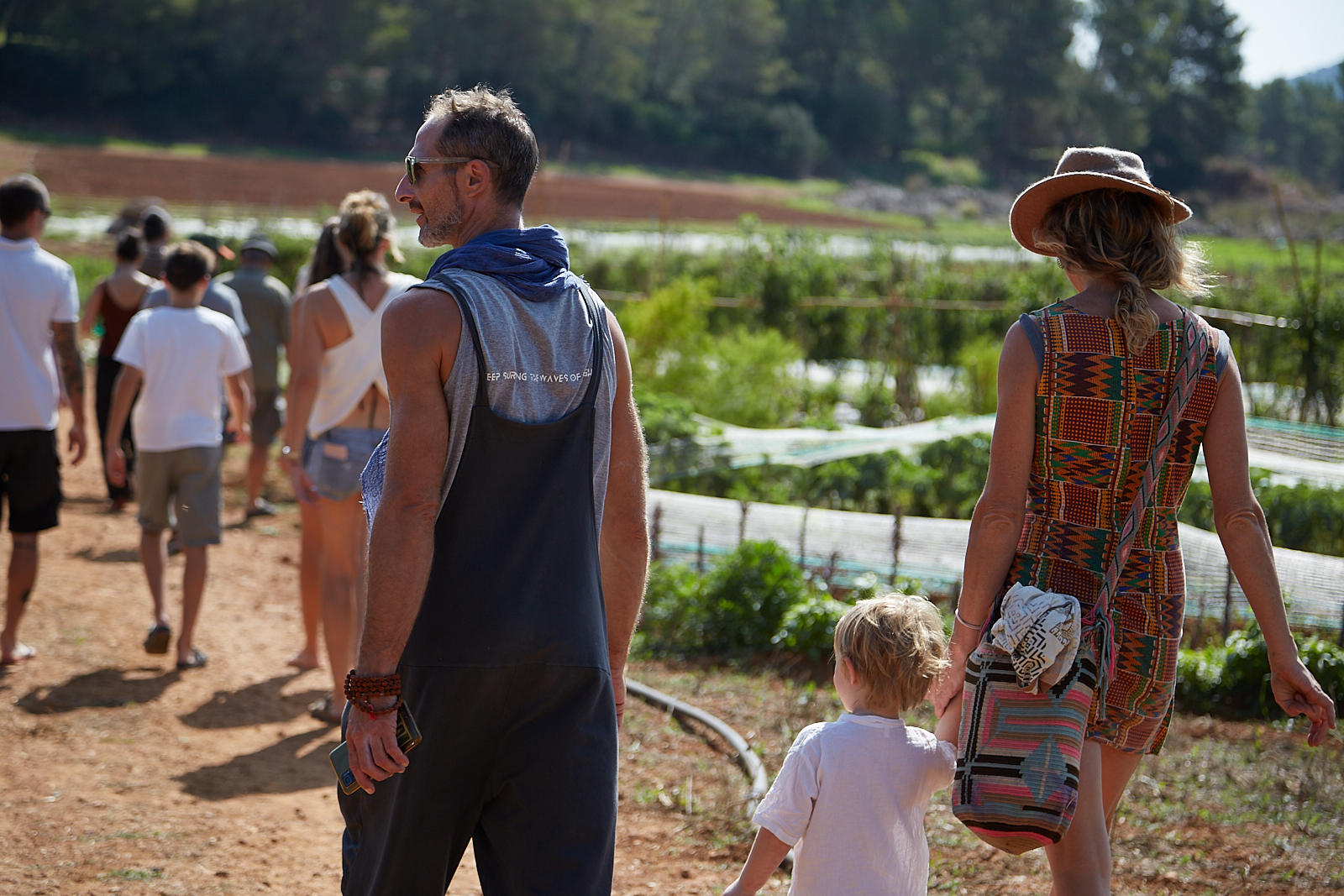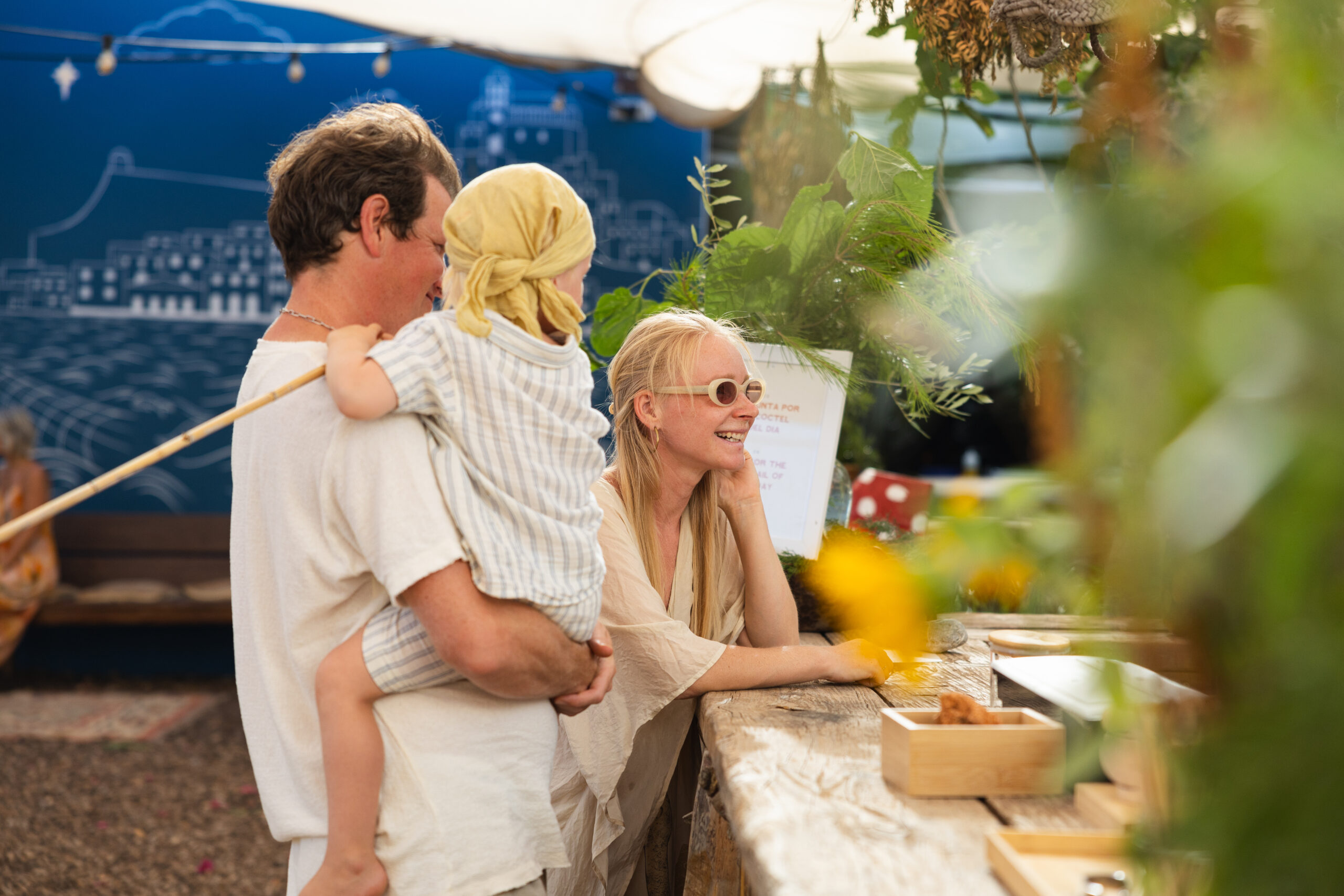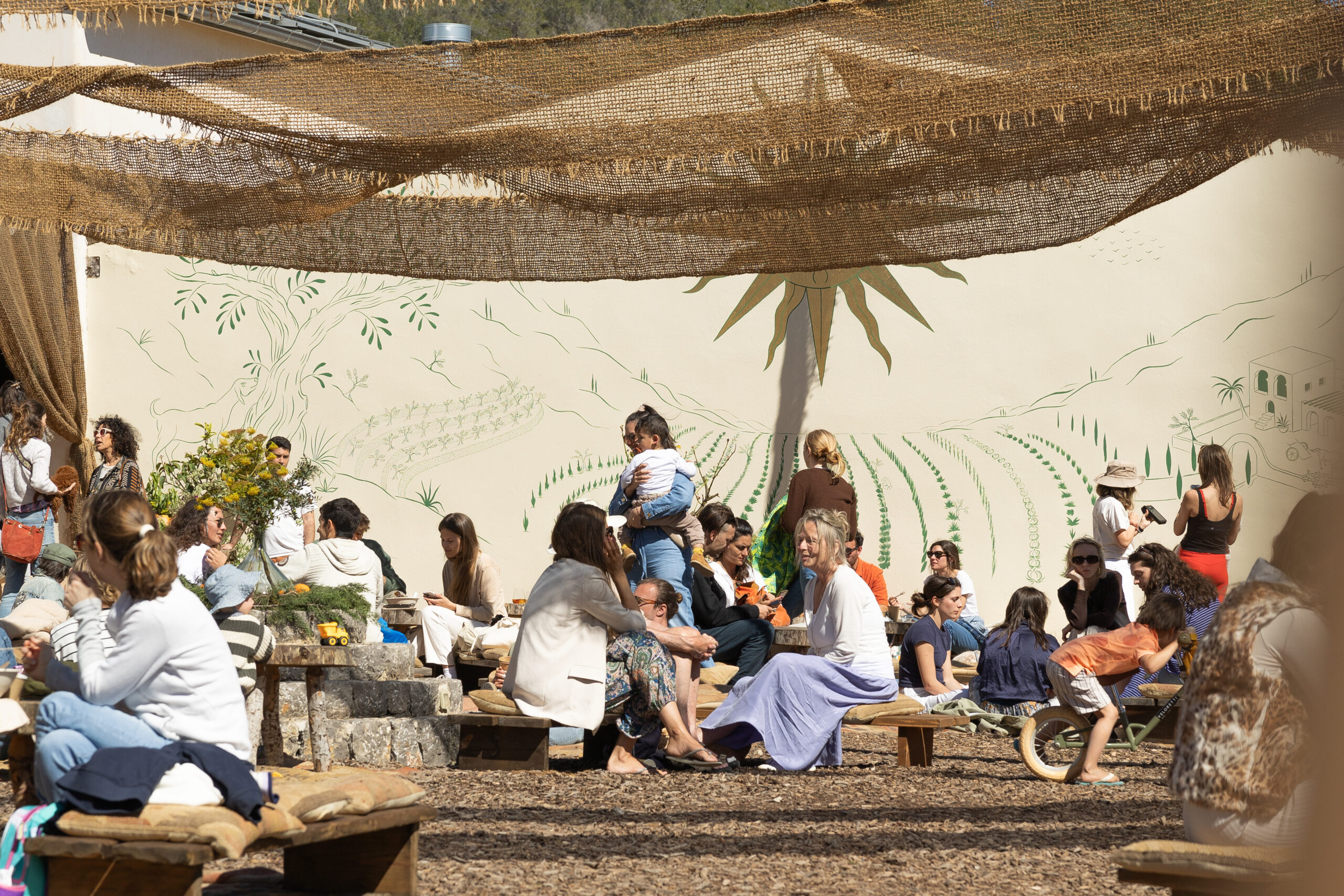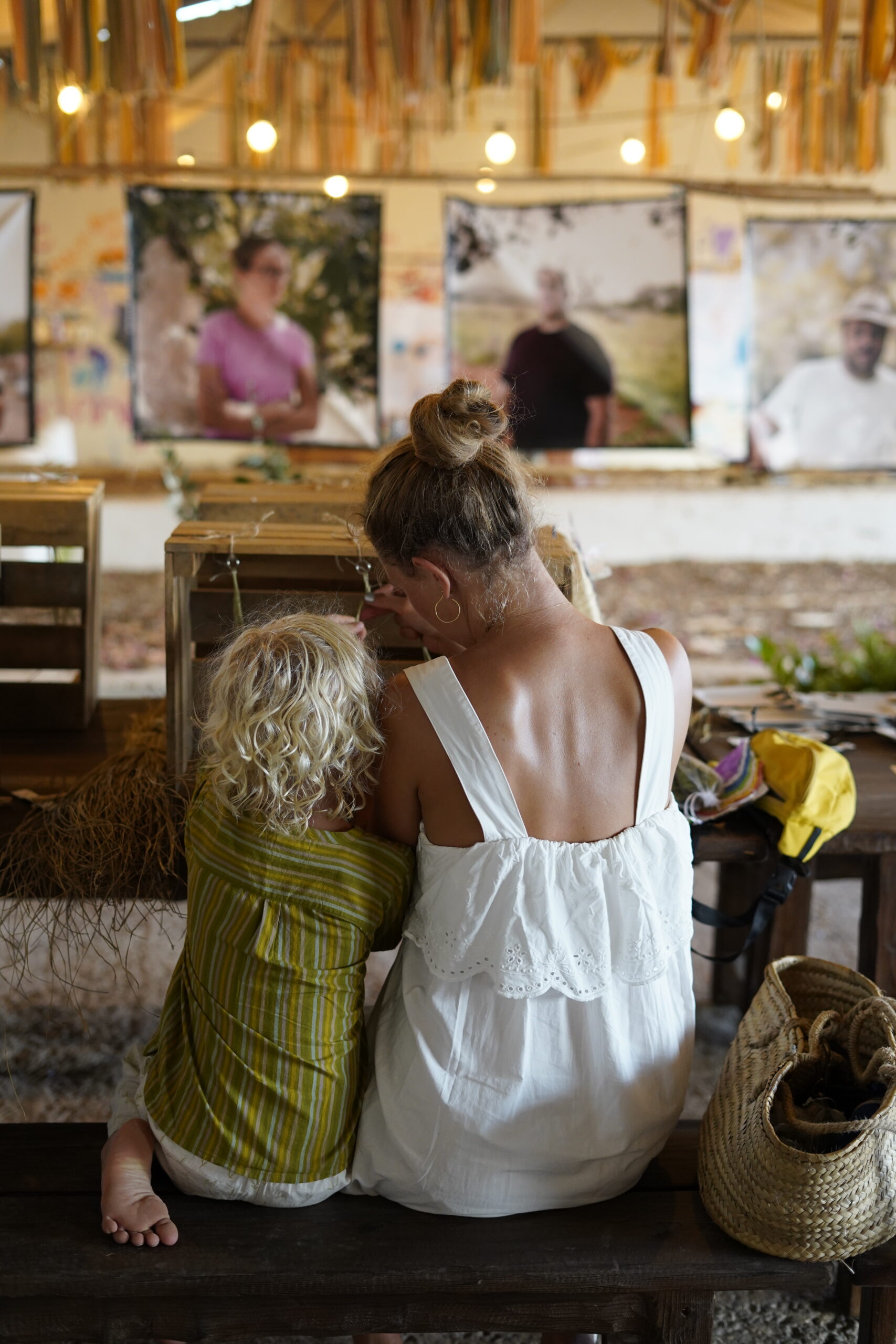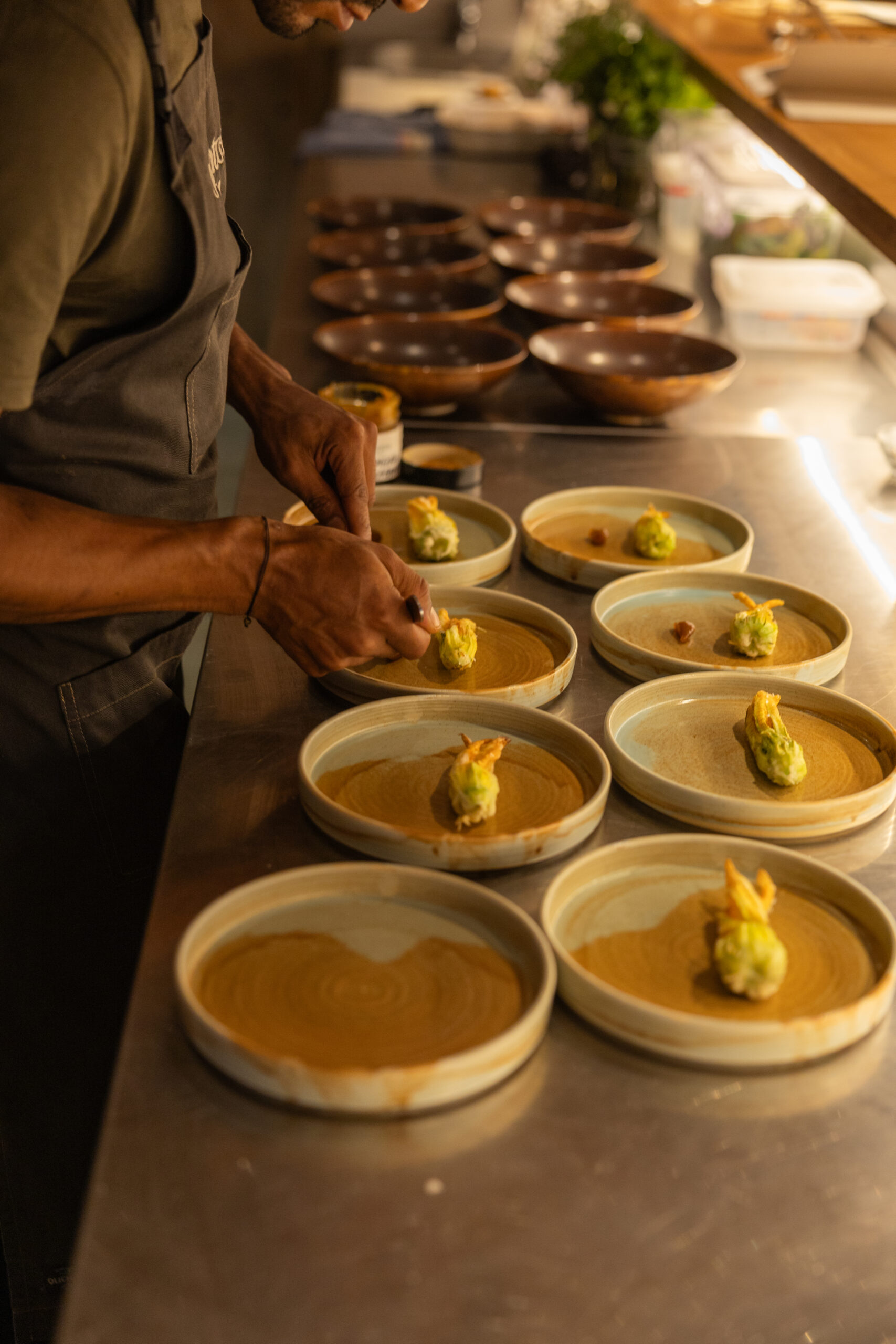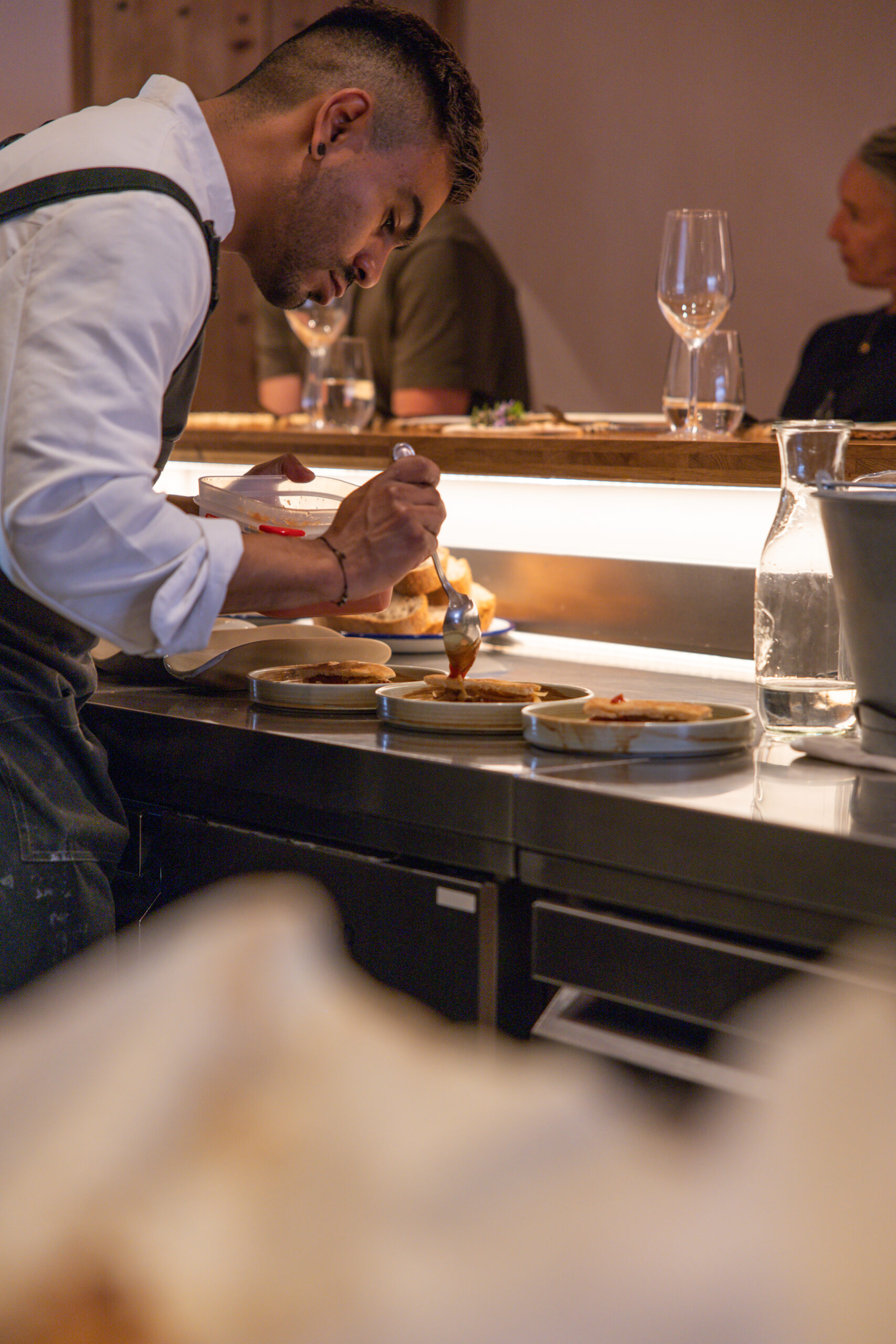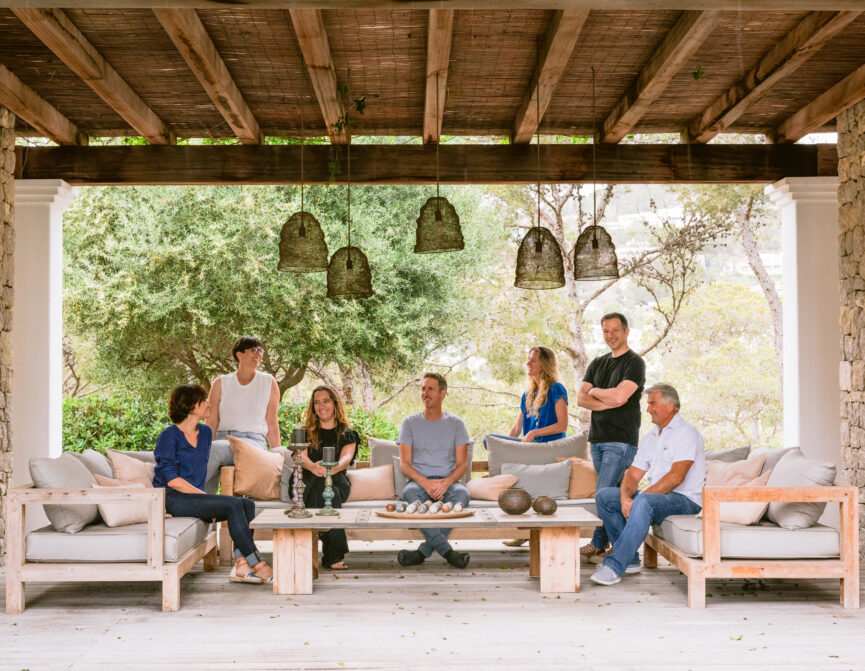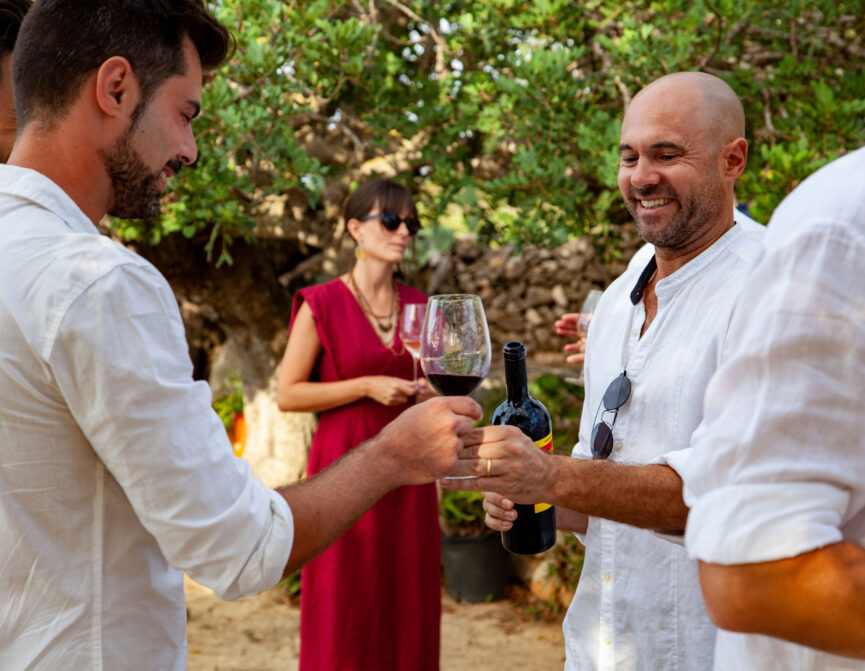We speak to designer and co-founder Finn Harries about championing agricultural regeneration, local community and organic produce.
In an island so often associated with hedonism, Juntos Farm is cultivating a different kind of abundance: one rooted in soil, beautiful design and shared culture. Tucked away in northern Ibiza, across 20 hectares of farmland, goats graze, chefs experiment with just-harvested produce and children are guided through fields to discover what food looks like before it reaches the plate.
This is the work of Finn Harries – designer and co-founder of Juntos – who, alongside Swedish entrepreneur Christian Jochnick, is building more than a farm. Their vision is a regenerative hub: at once an agricultural cooperative, food laboratory and community meeting point designed to reshape how an island eats and grows.
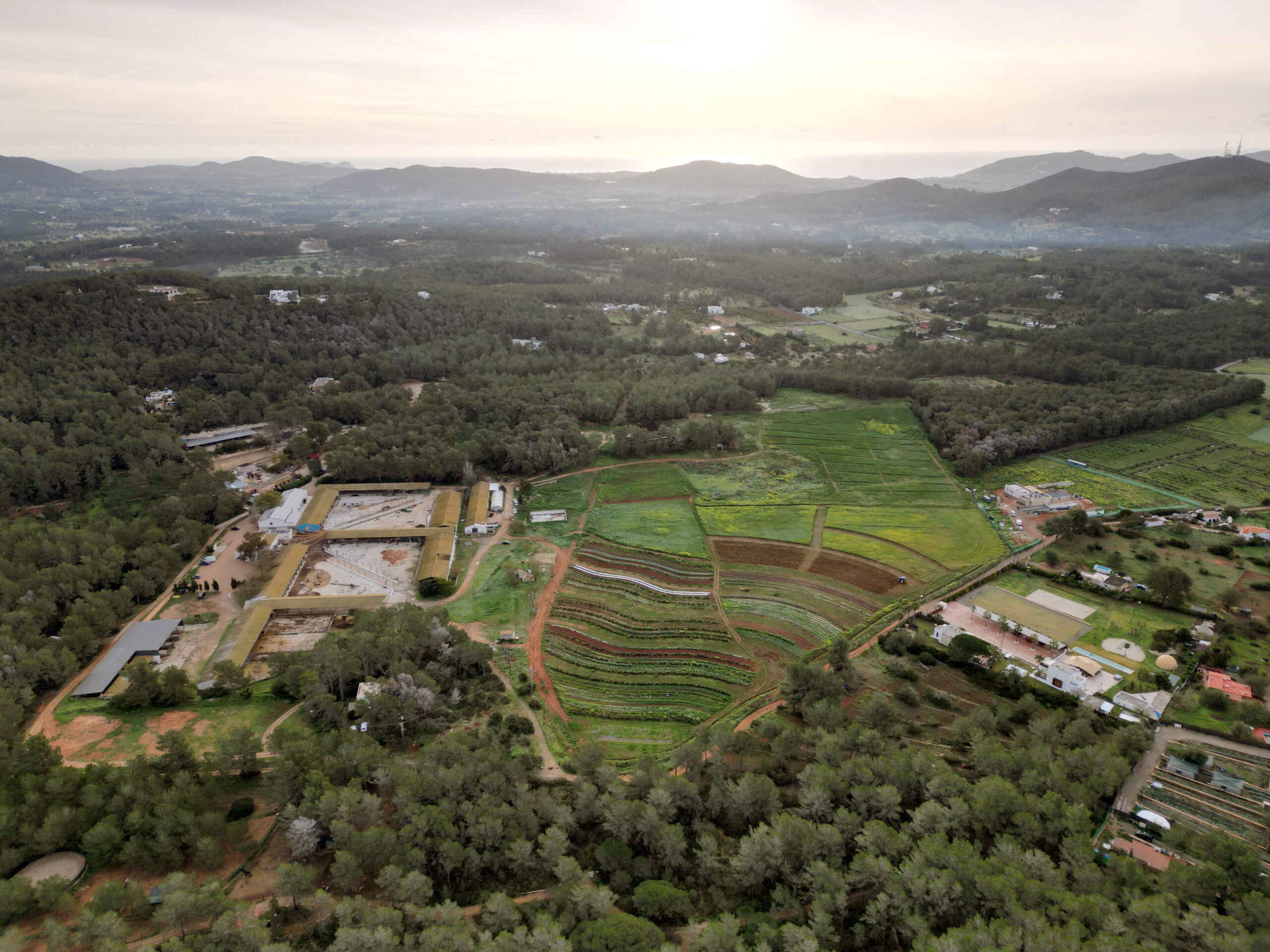
“Our role is to connect growers, transform their produce into higher-value products and create experiences that bring the community together.”
A thesis for change
First trained at Parsons School of Design in New York, Finn was immersed in systems thinking: the principle that when existing structures fail, they must be redesigned from the ground up. A year at the Architectural Association in London sharpened his interest in climate-responsive design, which later evolved into a research degree at Cambridge.
“I wanted to understand what regenerative design actually means,” he explains. “We hear the term often, but sometimes it feels a bit nebulous. I was curious what a framework would look like: farming and food systems turned out to be the clearest, most practical example.”
Finn chose Ibiza as the subject of his research proposal – an island he knew well, having visited over childhood summers. Seven years earlier, his family had bought a derelict farm there, a project that revealed how difficult small-scale farming had become on the island. “You quickly realise why so many people had let their land go fallow,” Finn says. “Tourism is more lucrative, the infrastructure for farming has collapsed and there’s little systemic support.”
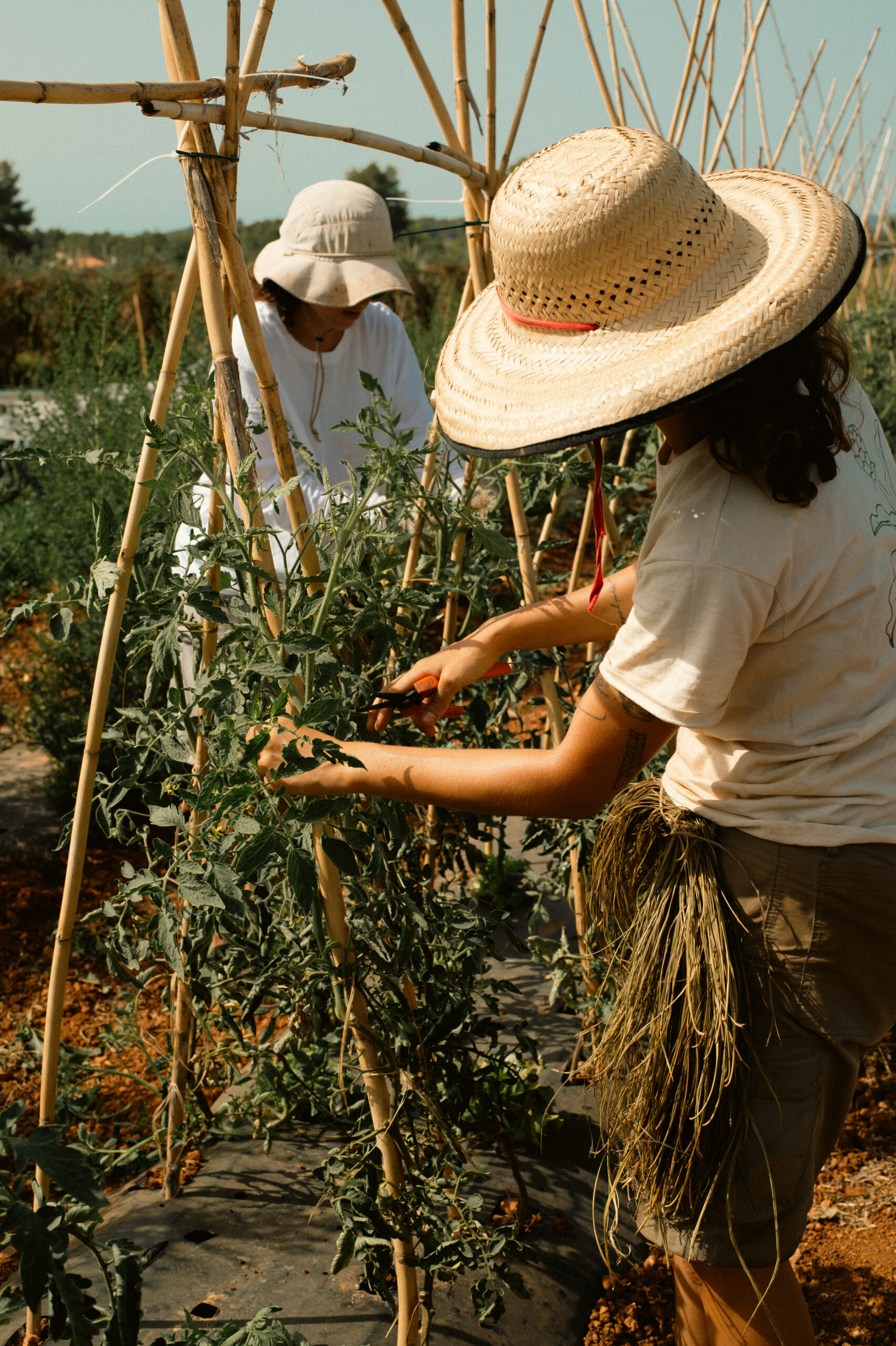
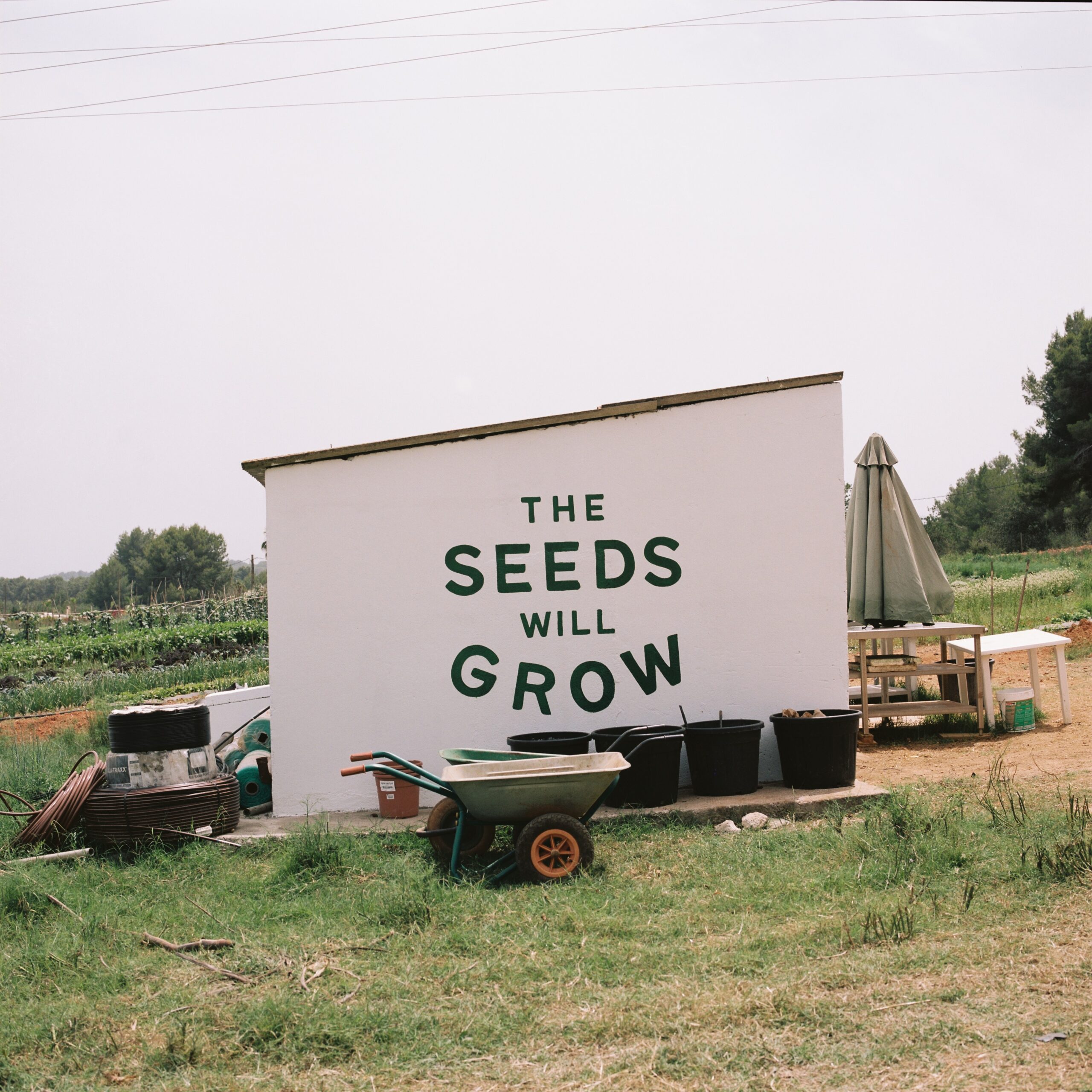
A serendipitous meeting
While conducting fieldwork in Ibiza, Finn met Christian Jochnick, a regenerative farmer already working on the island. Both were grappling with the same question: how to make farming resilient in a vulnerable landscape.
“We just met at the right time,” Harries says. “Christian had found this abandoned dairy farm that might be purchased and I was deep in research. It felt serendipitous – we had parallel ideas and realised they could converge into something real. We had this amazing opportunity for land to be reimagined as a model for regenerative agriculture.”
“Three years later, a project that started with just five people has grown into a team of 60. The support, Finn says, has been extraordinary. “People feel aligned with the philosophy. They want to be part of something hopeful.”
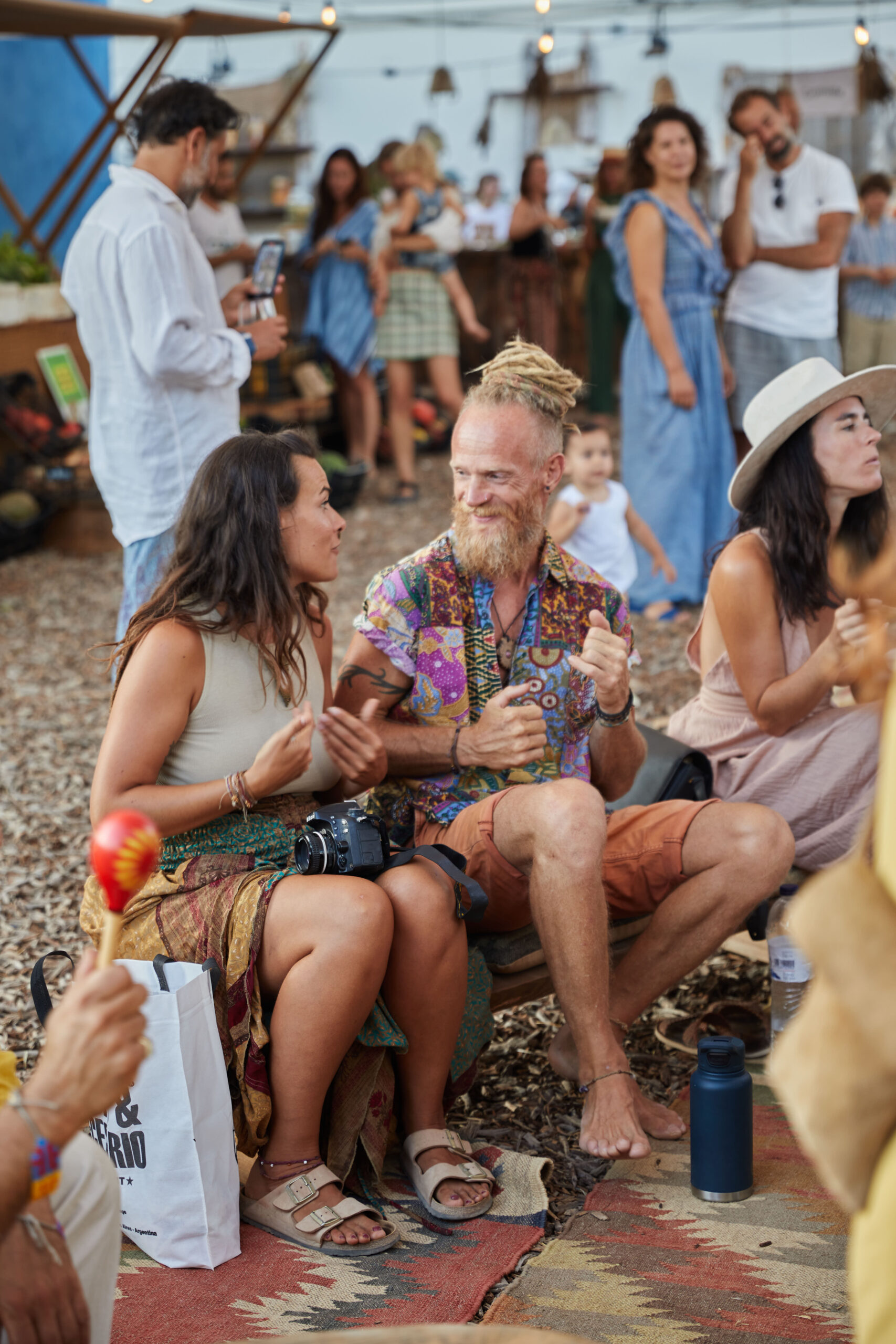


“We had this amazing opportunity for land to be reimagined as a model for regenerative agriculture.”
Rethinking agricultural design
At the heart of Juntos stands the House of Harvest, a striking 650-square-metre former hamburger-processing plant. Once home to abattoir drains and meat hooks, the building has been transformed into a light-filled space where farming, processing and community meet.
“Retrofitting is such an important architectural idea today,” Harries says. “How do we take industrial infrastructure and reimagine it for a new purpose?” The renovation was carried out with natural materials such as clay, cork, lime and compressed wood fibre – creating an energy-efficient shell. More than 100 solar panels now power a third of the building’s needs, while rainwater is harvested and cycled back into the fields.
Standing in the double-height space of the House of Harvest (what Finn affectionately calls the “church of food”) it’s hard not to feel the optimism of the project. The space operates almost like a digestive system: fresh produce enters through a large bay door each morning and moves through a series of processing stages, before emerging at the far end as a packaged product or plated seasonal dish.
“Visitors can even peer through windows to witness the process in real time. “Agriculture has become invisible in the industrialised world,” says Finn. “We wanted total transparency. It’s about reconnecting people to their own nutrition.”
A blueprint for rural resilience
Winning trust in Ibiza, however, is no small feat. “This island has seen a lot of change: motorways, mass tourism, outside investment. People are sceptical of new projects and rightly so,” Finn acknowledges. Juntos’ answer has been to act respectfully and tangibly, measuring success through impact: 16 farms across the Balearic islands now supported, dozens of products developed and a community that gathers weekly at the farm’s shop and tasting room.
Finn’s long-term vision for Juntos is clear: to transform the vast site – with 12 agricultural buildings in total – into a bio-regional hub. “It’s a farm of farms,” he explains. “Our role is to connect growers, transform their produce into higher-value products and create experiences that bring the community together”. That way, he believes, regenerative food can actually compete with industrial food systems.
“Retrofitting is such an important architectural idea today.”
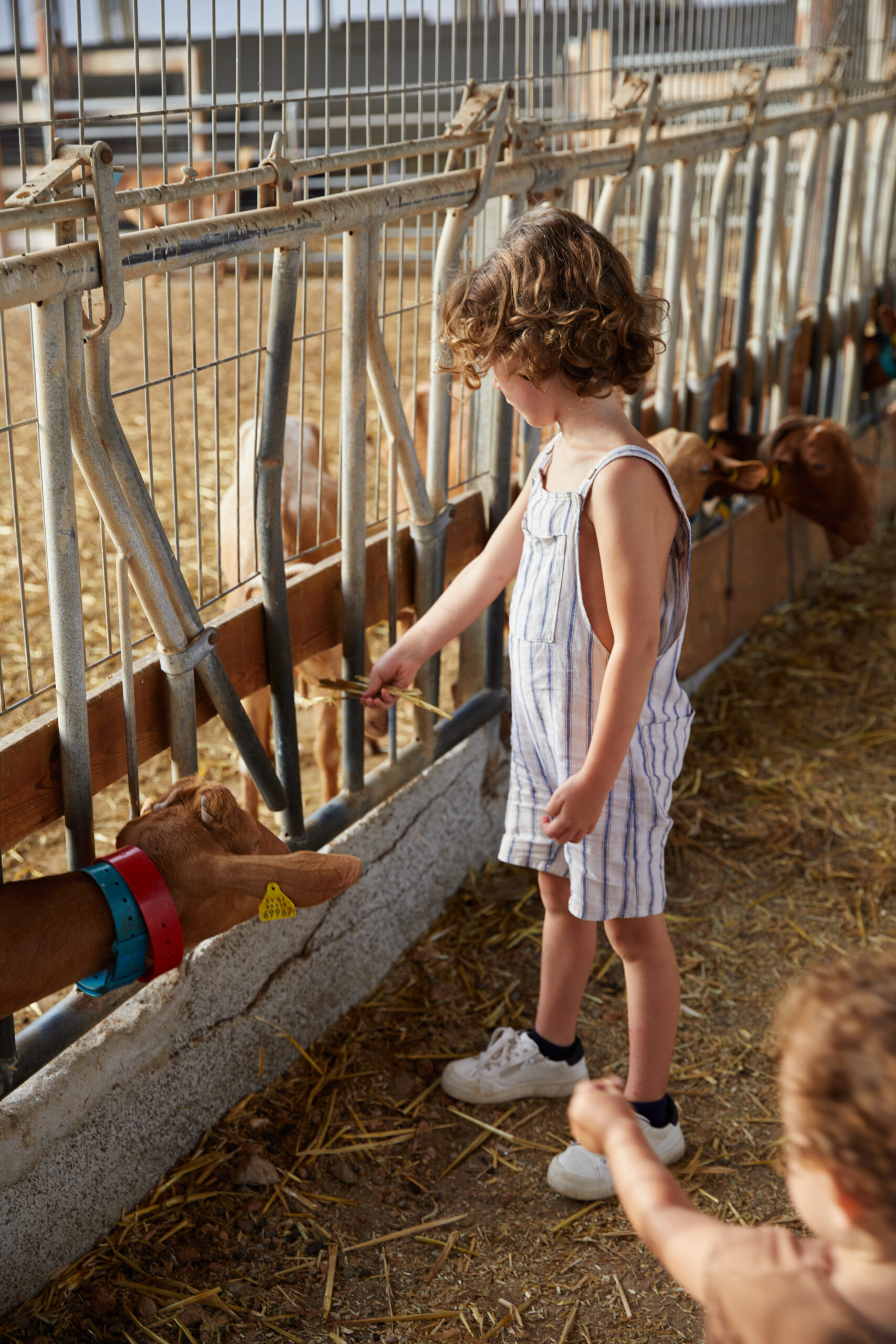
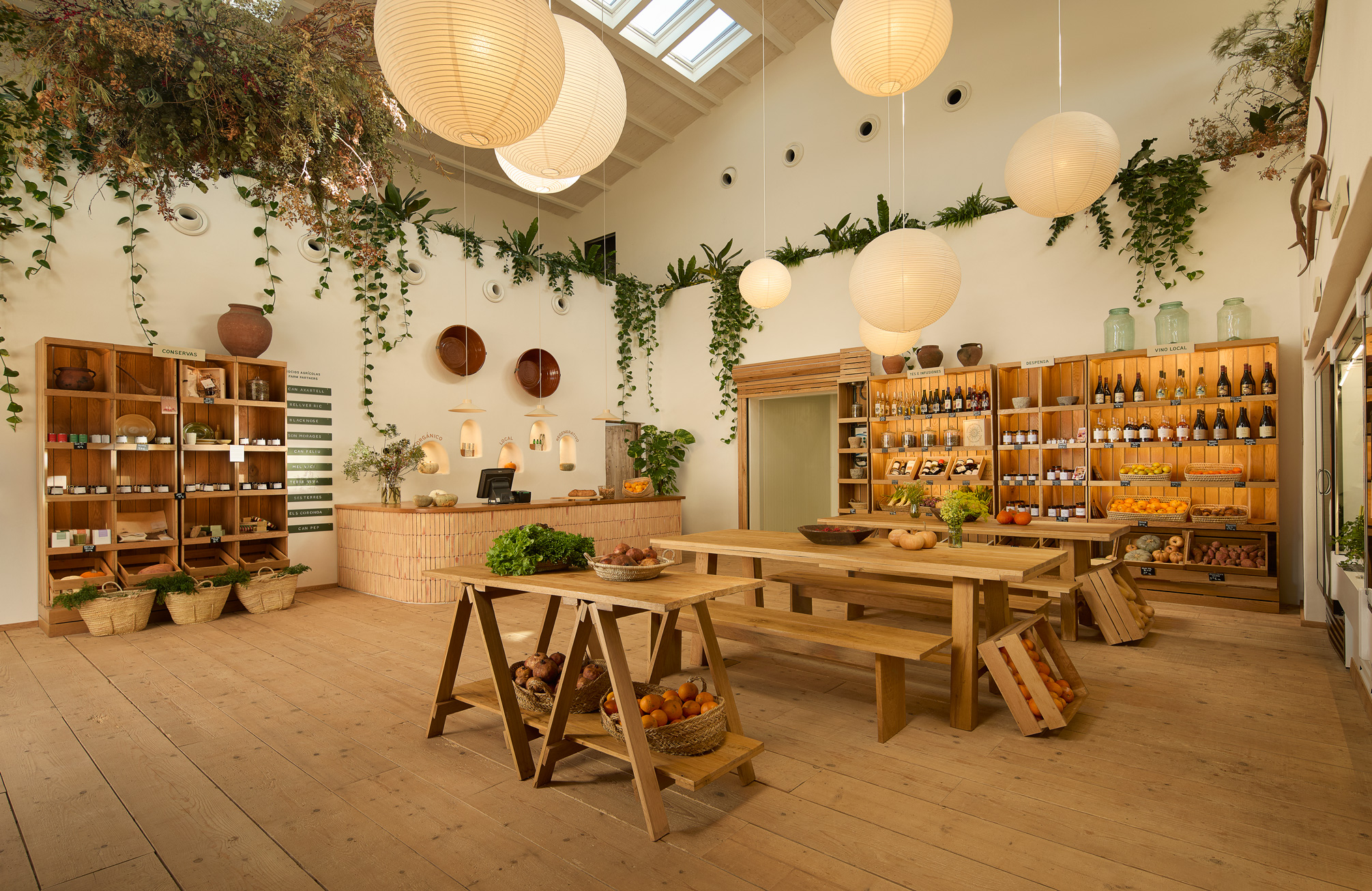
“Culture is design, food, craft, storytelling – it’s the expression of a place. Farming lost that in the industrial era. Here, we joke about putting the culture back in agriculture,” Finn says. The model is deliberately designed to be replicable elsewhere. “Our goal is to make this single site work, but in doing so, it becomes a case study for rural regions across Europe.”
The project is young, but its momentum is undeniable. “I think people are drawn here because it offers a glimpse of another way forward,” Finn reflects. From a derelict plot in northern Ibiza to a thriving hub of regenerative agriculture, Juntos Farm is living proof that communities flourish when they’re reconnected to the land – and shown a future rooted in sustainability, creativity and hope.
Discover visiting hours, volunteer opportunities and the farm shop here.
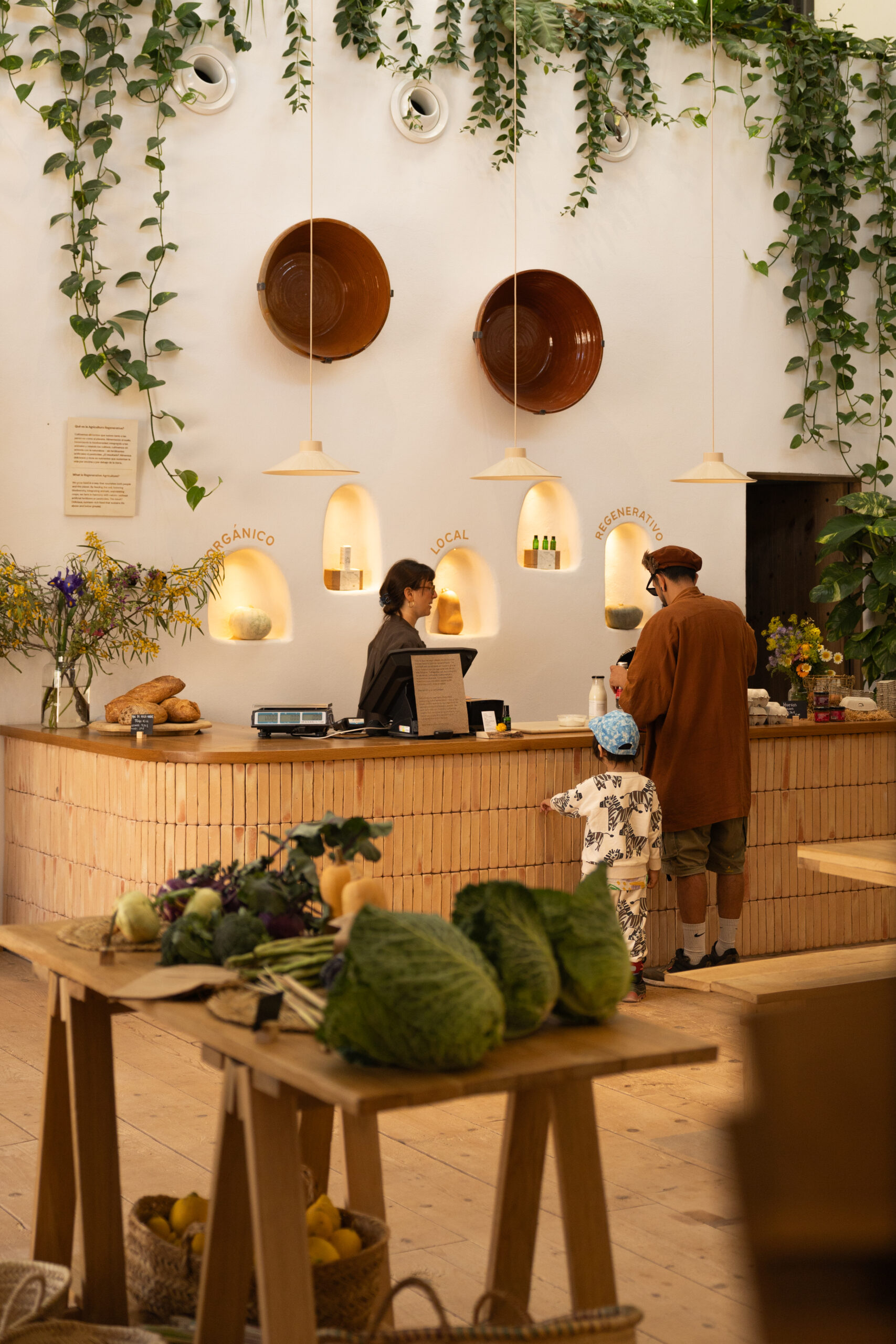
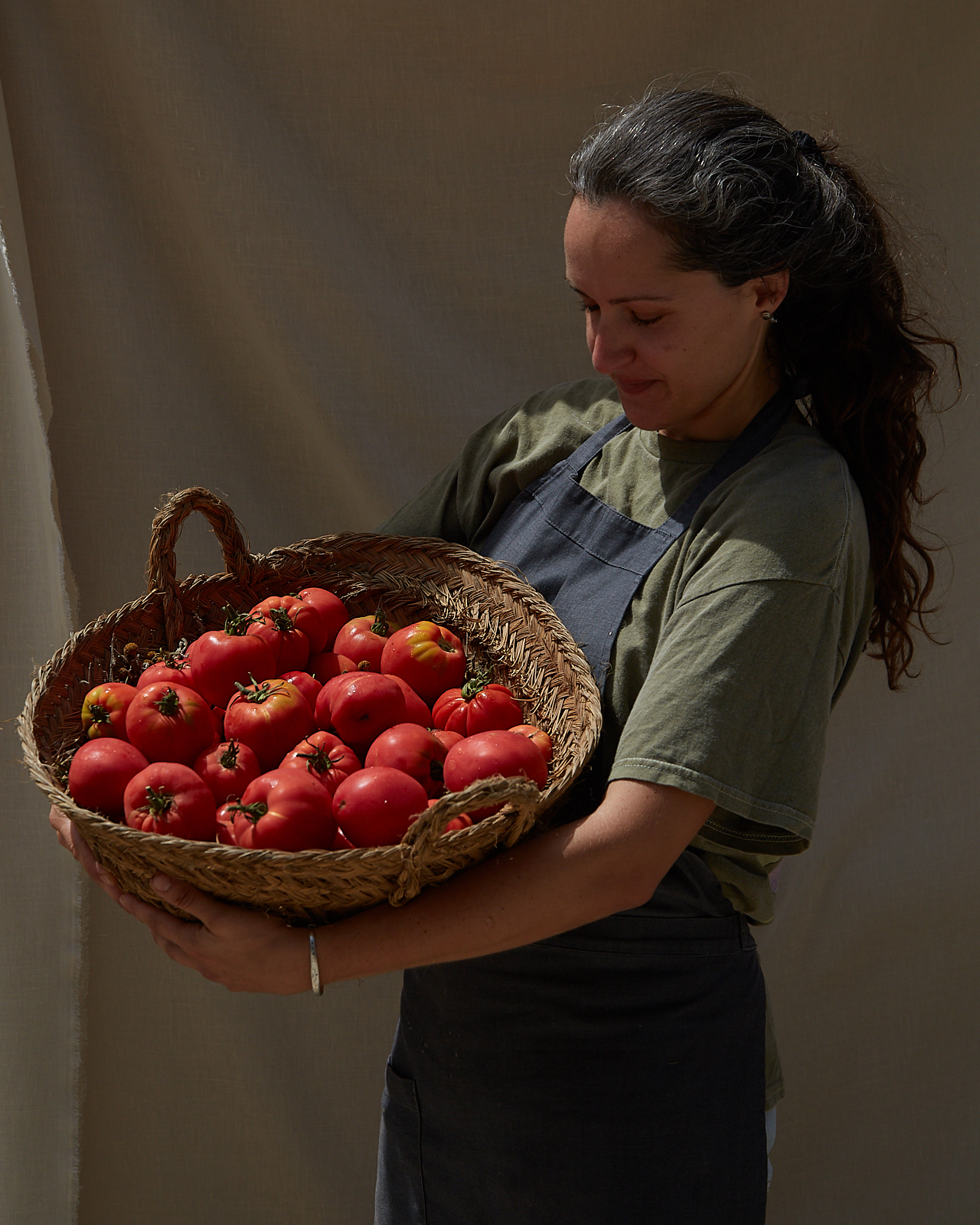

“We wanted total transparency. It’s about reconnecting people to their own nutrition.”


